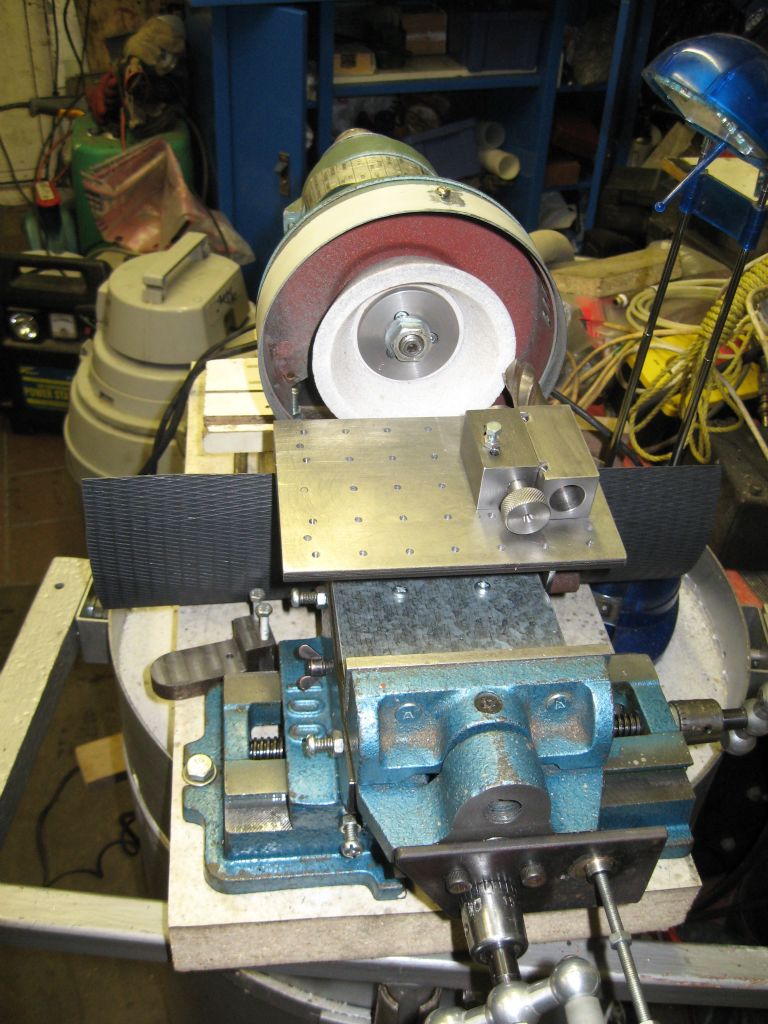A few random thoughts:
Despite the name end mills are not intended to cut on the end, but on the side flutes. That's why slot drills exist, for when there is a need to plunge into the work. The distinction seems to be disappearing in industry, as many smaller cutters, irrespective of the number of flutes, are centre cutting. The ends of cutters are normally hollow ground by about a degree so they don't rub when machining at constant depth.
Recutting chips sounds 'orrible and is bad for cutters.  In my experience the resultant damage is small 'nicks' in the cutting edge, rather than breaking chunks out of the cutter.
In my experience the resultant damage is small 'nicks' in the cutting edge, rather than breaking chunks out of the cutter.
My usual approach to milling is to decide upon a spindle speed based on material and cutter size and type (HSS or carbide). The I'll decide on the feedrate to use, based on the chip load I want and number of cutting edges. Finally I'll choose a depth of cut and width. Some parameters are determined by the geometry of part; if you're cutting a slot there's no choice but to cut the full width of the cutter. Depth of cut, and width of cut, also determine the power required. I don't normally calculate this in detail, but it's useful to have some indication; no point in stalling the machine! A useful rule of thumb is that 1 horsepower will remove 1 cubic inch per minute in low carbon steel.
Now as to the question of tooth loads.  It all depends on cutter size, material and, oddly, width of cut. I'm still experimenting with this; but I have learnt that chip load is important. I've looked up a few CNC routines:
It all depends on cutter size, material and, oddly, width of cut. I'm still experimenting with this; but I have learnt that chip load is important. I've looked up a few CNC routines:
2mm HSS 2 flute cutter, aluminium, 4000rpm, full width, doc 1mm – feedrate 150mm/min, chip load 0.019mm/tooth
2mm carbide 4 flute cutter, 316 stainless steel, 3500rpm, width of cut 0.1mm, doc0.4mm – feedrate 70mm/min, chip load 0.005mm/tooth
12mm HSS 3 flute cutter, aluminium, 4000rpm, full width, doc 3.5mm – feedrate 900mm/min, chip load 0.075mm/tooth
10mm carbide 3 flute cutter, hot rolled steel, 2500rpm, width of cut 7.5mm, doc 2.2mm – feedrate 300mm/min, chip load 0.04mm/tooth
6mm carbide 3 flute cutter, delrin, 2500rpm, full width, doc 6mm – feedrate 800mm/min, chip load 0.1mm/tooth
With more experience I'd now up some of the feedrates above, especially for the hot rolled and delrin. I'm still learning about CNC, and tend to use higher feedrates on the manual mill, as one can quickly reduce it a bit if it doesn't sound right. With CNC it tends to result in 'ping' and a broken cutter. 
One other point to think about; if the width of cut is small, then the feedrate can be increased, as the chip is thinner. On my manual mill, in aluminium, I often use the 'rapid' button for the finishing cut.
Regards,
Andrew
ChrisH.


 Have some blunt mills and it was amazing after not doing any milling for awhile how easy the 'new' mill went
Have some blunt mills and it was amazing after not doing any milling for awhile how easy the 'new' mill went 


